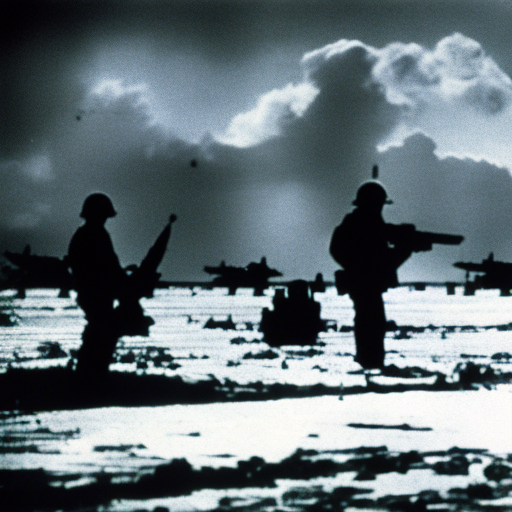Battle of Midway: Turning Point in the Pacific War
The Battle of Midway, fought from June 4 to June 7, 1942, was a crucial naval battle in the Pacific Theater of World War II. It marked a turning point in the war, as the United States dealt a severe blow to the Japanese Navy, halting their expansion in the Pacific and shifting the balance of power in favor of the Allies.
Background:
After the attack on Pearl Harbor in December 1941, the Japanese Empire rapidly expanded its control over the Pacific region. The Japanese aimed to eliminate the United States as a strategic threat and secure their dominance in the Pacific. To achieve this, they planned to capture Midway Island, a strategic outpost that would provide them with a base to launch further attacks on Hawaii and the West Coast of the United States.
The Battle:
The Battle of Midway began when the United States intercepted Japanese communications and learned of their plans to attack the island. Admiral Chester Nimitz, the commander of the U.S. Pacific Fleet, devised a plan to ambush the Japanese fleet and gain the upper hand.
The battle unfolded in several stages. The first phase involved aerial attacks by both sides, with Japanese aircraft targeting Midway Island and U.S. planes attempting to defend it. Despite heavy losses, American dive bombers managed to sink three Japanese aircraft carriers, the Akagi, Kaga, and Soryu. In a stroke of luck, American pilots also managed to locate and sink the fourth Japanese carrier, the Hiryu.
In the second phase, the Japanese attempted to retaliate by launching a counterattack on the U.S. carriers. However, their efforts were thwarted by the American carrier Yorktown, which had been damaged but remained operational. The Yorktown, along with the carriers Enterprise and Hornet, launched a series of airstrikes that crippled the remaining Japanese carrier, the Hiryu, forcing its eventual sinking.
Significance:
The Battle of Midway was a decisive victory for the United States. The loss of four Japanese carriers, along with their highly trained aircrews, was a significant blow to the Japanese Navy. It not only halted their expansion in the Pacific but also shifted the balance of power in favor of the Allies.
The battle also had strategic implications. The United States was able to protect Midway Island, denying the Japanese a crucial base and forcing them to abandon their plans to invade Hawaii. Additionally, the battle demonstrated the effectiveness of carrier-based aviation and marked a turning point in naval warfare, as carriers became the primary capital ships in future conflicts.
Legacy:
The Battle of Midway is widely regarded as one of the most important naval battles in history. It boosted American morale and demonstrated the resolve of the United States in the Pacific War. The battle also provided a much-needed boost to Allied forces, who were able to capitalize on their victory and launch offensives in the Pacific.
Furthermore, the Battle of Midway had long-term consequences for Japan. It severely weakened their naval power and forced them onto the defensive for the remainder of the war. The loss of experienced pilots and aircraft carriers hampered their ability to project power and marked a turning point in the Pacific War.
In conclusion, the Battle of Midway was a pivotal moment in World War II. The United States’ victory not only halted Japanese expansion but also shifted the balance of power in the Pacific. The battle’s strategic significance, coupled with its long-term consequences, solidified its place as a turning point in the war and a testament to the bravery and skill of those who fought in it.












